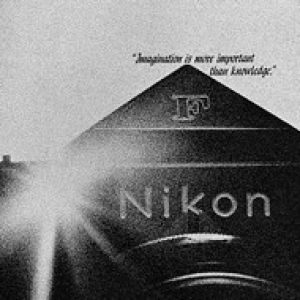Infrared Photography using an Olympus C2020z
I don't know what possessed me to buy another C2020 after selling my three previous purchases.
Well that's not strictly true! The reason I purchased this one was because I traded my Infrared modified Nikon D100 for a normal D300. The thing is, I love shooting IR and not having an IR camera is a bit of a wrench for me.
So why did I choose a C2020?
Well, for a start, it cost just £1.20 from eBay. Let's face it these cameras are ancient, nobody wants them anymore. There's no dedicated battery and it uses the near obsolete smartmedia card, the largest available is only 128mb which doesn't allow for many saved images - 22 if you shoot at best (SHQ) quality. So really, why would I want to pay anymore more?
Back in February 2000, when the camera was launched, SHQ meant 1600 x 1200 pixel sized images, yet another reason why people over look this camera today. However, what a lot of photographers failed to realise is this camera is special in other ways. When I comes to Infrared Photography the Olympus C2020 is King!
As a result we can forgive the fact that this camera is slow to start, very slow to use and very very slow at writing SHQ (TIFF) files to card. And that's before you even place a infrared filter over the lens!
Back in 1999, possibly at a time when Olympus were putting the finishing touches to this camera, we were all threatened with the Millennium Bug! A supposedly nasty little creature that was going to render all our electrical goods useless come the new Millennium.
Knowing this, my guess is, Olympus thought - hang on here! Let's not bother putting in an expensive infrared blocking filter over the sensor - nothing electrical is going to work after 1999 anyway, let's do without it!
Well! As we all know now, Nikon had just delivered us the D1 and secretly ordered the mass extinction of said Bug in order to make way for their new D2 range and world dominance of the digital SLR market.
Robert W.Wood may hold the title of the Godfather of Infrared Photography, having pioneered the film emulation in the early 1900's. Olympus on the other hand have given us the "Holly Grail" in terms of Digital Infrared Camera.
If you've ever used a C2020 you'll understand how slow and limiting it is compared to modern day "normal" camera. Nonetheless, if you're interest in Infrared photography then you must seek out and own one of these cameras for yourself. Just cover the lens with an infrared filter of your choice (I use a 720nm filter) and away you go - you don't even need a tripod. Images can be taken hand held at f4 - 100 ISO @1/60 sec on a sunny day.
For those of you who are interested, here's how I set up my C2020:
ISO: 100
Drive: Single Frame (but you can Bracket the normal 3 exposures)
Flash: Off
Digital Tele: x1 (off)
White Balance: Auto
Function: Off (but you can set to B&W)
Mode Setup
All Reset: Off (must be set to "off" in order to save camera setting when switching off
Sharpness: Normal
Set Up: TIFF
Quality: SHQ
IR Filter Used:
720nm (R72) or
650 nm if you want more colour in your infrared images.
There are several infrared photography groups on Flickr where you can gain inspiration from, notability the Infrared Photographic Society for one and the Olympus C2020 Infrared Group.
Those of you who have iPads may also be interested in the Digital Infrared Photography Magazine on Flipboard: http://flip.it/eFXkA
My names not Susan, but thanks for dropping by.
- 3
- 0

Comments
Sign in or get an account to comment.


